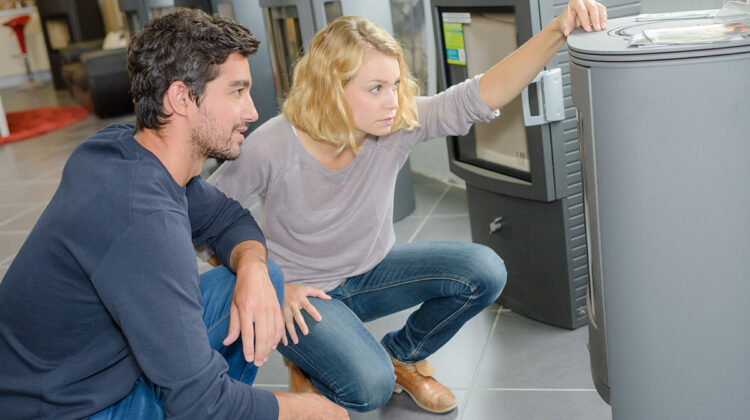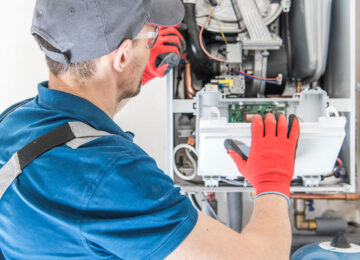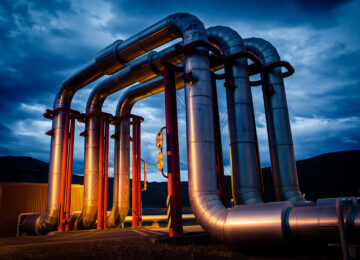Replacing a furnace can be an important part of keeping your home warm and comfortable during the cold winter months. But just how much should you expect to pay for a new furnace? On average, furnace replacement costs range anywhere from $3,000-$7,500 depending on the size of your home and the type of furnace that you choose. There are also additional factors such as labor costs and installation fees which can increase this cost even more. To make sure that you get the best system for your home at the best price, it’s important to consider certain things before making your purchase. These include researching different types of furnaces, getting an estimate from multiple contractors, and asking questions about warranties and energy-efficiency ratings. By taking all of these steps into consideration before investing in a new furnace, you can ensure that you get the most out of your purchase. Ultimately, the cost of replacing your furnace will depend on a variety of factors. The size of your home and the type of furnace you choose will determine how much you can expect to spend on installation. Other important factors include labor costs, installation fees, and warranties. By doing your research and asking plenty of questions before making a purchase, you can make sure that your furnace replacement is done right and at a fair price.
Factors in Calculating the Cost of a New Furnace
Before you invest in a furnace, it’s wise to gain insight from an HVAC professional. After all, they’ll be able to best assess your particular needs and provide a personalized quote. So how much are we talking? Generally speaking the national average for furnaces plus installation is $4,453; however this can vary depending on where you live as well as other factors.When considering the most economical way to heat your home, HVAC professionals take into account factors such as size, configuration and age of a house. Location, livable square footage and energy bills are also taken into consideration when deciding on the best furnace type for you – whether that be gas or electric based. It’s essential to understand how each factor will affect the cost of purchasing and installing a new furnace so that you can make an informed decision.
- Type of furnace: Various furnaces are accessible, including gas, electric, oil-fueled, mini-split systems and geothermal variations.
- Average temperature: When temperatures start to drop, don’t forget to switch on your furnace. It’s a great way of ensuring that both you and your home are kept snug and cozy during the winter months!
- Price:Furnace prices are dependent on the brand, make and model as well as installation costs.
- Square footage: Substantial dwellings require a furnace that has the capability of heating wide-ranging areas.
- Insulation values: An HVAC expert can identify any insulation deficiencies and potential air escapes within your home, so that they can suggest the ideal furnace to solve those issues efficiently.
Additional Costs and Considerations
While new furnaces come with their own costs, homeowners should be aware that extra charges may be incurred for supplementary parts or additional labor required to finish the job. Any hired professional should make these potential expenses clear before beginning the installation process so as not to incur unwelcome surprises.
Expert Installation
Acquiring a new furnace can cost anywhere from $2,000 to an astounding $10,000. This expenditure covers the heater itself, any equipment needed for installation and labor fees. It is common to pay between $150 and $500 for an expert service provider along with their hourly rate of up to $100 per hour for one certified installer plus around fifty dollars each additional hour that extra staff members may be on-site throughout your project completion.Depending on your home’s current set-up and whether you require ductwork repair or installation, this fee is adjustable. Factors that have an effect on pricing include city living expenses, furnace efficiency, local customizations as well as any included warranties.
Electrical Circuit Costs
If the situation requires relocating a furnace, then be prepared to spend between $500 and $2,000. In some cases during basement renovation, you may only need a few extra feet of ductwork if the new furnace is placed close to the original one. No matter what your scenario entails, it’s important to know that re-locating your existing system can come with an additional cost. Completely relocating your system—say, from the basement to the attic—will certainly take more effort and investment. You’ll have to construct additional ductwork and drywall as well as set up new electrical circuits in order to be able to move it. The total costs depend on labor prices and furnace brands so make sure you do adequate research before deciding on a plan of action.
Drywall Repairs
When renovating and introducing a new furnace, you may need drywall to cover the changes that were made on the wall. The cost for this usually ranges from $250-$800 depending on size or area of damage. It could be minor repairs such as fixing up spots in the wall or more extensive work like sealing off larger holes. A lot of contractors decide repair prices according to size/location so make sure you consult with them before they begin their services!
Gas Line and Ventilation Costs
To ensure a safe burn, gas furnaces need air. Consequently, you may have to add either ventilation or a gas line during the installation of your furnace. The price tag for this will depend on several factors such as brand, BTU rating and energy efficiency; these can range from $300-$800 ($15-25 per linear foot). If converting an electric furnace over to one powered by natural gas however, factor in up to $15K extra (in addition to regular installation fees) into your budget. The overall cost of upgrading or installing new ductwork and vents for a new furnace varies depending on the existing setup. The average price range is between $3,000 to $5,000; however, if repairs are needed that can add an additional expense of up to $5,000. Regardless of your situation ensuring proper venting will be key in guaranteeing your furnace operates efficiently and effectively.
Furnace Capacity
When it comes to furnaces, size matters. HVAC professionals will assess the square footage of your home in order to find the best type and model for you. This is because many homes need 30-50 BTUs per sq ft for optimal heating efficiency – so a 700-1,500 sqft house would require 40k-60k BTU rating quite likely costing between $2,000-$3,000 while larger houses ranging from 2K – 5K sqft can cost more at 125k-150k with installation fee estimated around $3,300-$6,500.
Permits
Before beginning any job, it is essential to acquire the mandatory permits and pay all necessary fees associated with labor. The cost of a permit ranges from $350 to $1,800 depending on location. This can amount up to 25% of your final bill! To reduce costs without sacrificing quality, many companies incorporate a $100 inspection fee as an assurance that their equipment functions safely and effectively. However, before deciding upon services be sure to shop around – some local gas providers offer free inspections which may save you money in the long run!
Cost of New Furnace Types
With numerous furnaces available on the market, prices can drastically differ. On average, a furnace replacement typically ranges from $2,000 to $7,000 depending on your chosen model. Whether you go with gas, electric or oil-based furnaces; all of them use distinct amounts of fuel that will ultimately affect the quality and intensity of home heating.
Natural Gas
If you are looking for an efficient and cost-effective way to heat your home, natural gas furnaces may be the solution. Especially ideal in northern climates with well insulated homes, these units can save money on energy bills while providing quick heating as needed. Installation of one of the best gas furnaces typically costs between $3,800 – $10,000 depending on brand preferences and if converting from electric models; however additional expenses could arise due to ductwork adjustments required by a contractor when necessary.
Electric
When compared to gas furnaces, electric furnaces come in at a lower installation cost but with higher monthly running costs. This form of heating is both efficient and low maintenance when it comes to function; however, there may be some drawbacks such as the lengthier time required for heat-up than their gas counterparts. Installation fees range from $2,000 – $7,000 making this an affordable option that still provides quality heating solutions!
Oil
Years ago, U.S. homeowners sought to switch from oil furnaces to natural gas in response to rising prices. However, an oil furnace is now seen as the more sustainable option since it eliminates monthly heating bills and allows you purchase fuel in bulk directly on-site making it much more eco-friendly than other alternatives. The cost of installation may be a bit steep–running around $6,750 – $10,000—but with no extra recurring costs or environmental impact this up front expense can really pay off over time!
Do I Need a New Furnace?
Winter’s chill can be extra uncomfortable and even hazardous when your furnace doesn’t work. Being proactive is much better than waiting until it fails during a cold snap, so here are some key things to consider when you need to replace your heating system: potentially high energy bills, safety hazards, energy efficiency ratings, and flooding risks. When you have all the facts in front of you about replacing your furnace with quality models that fit both budget and home environment needs – then it becomes easier for an informed decision-making process!
High Heating Bills
As winter approaches and temperatures drop, it’s essential to review your energy bills for signs of unusually high costs. If you’re shelling out more than usual despite no increase in rates, then this could be a red flag that something is amiss with your furnace – the biggest power guzzler at home! To maximize efficiency and reduce expenses, replace older appliances with newer models or ensure existing ones are well-maintained; they will perform better over time compared to those neglected.
Safety
Don’t let your malfunctioning furnace put you and your family in danger! Carbon monoxide poisoning is a serious health hazard, and exposure can be fatal. Additionally, an inefficient heating system may cause dust particles or mold spores to circulate through the air at home– exacerbating asthma symptoms or allergic reactions. Upgrade to a new furnace – it will help purify the air quality of your living space while alleviating potential health risks. It’s time for healthier & safer living – get yourself that new furnace today!
Energy Efficiency
A furnace that is too large often cycles on and off more frequently, using more energy to power it and keep it continually heated. To avoid wasting energy, you may want to consider replacing an older furnace with a newer, energy-efficient model. The size of the unit can significantly affect how much energy it needs to run. To make a furnace more efficient, homeowners can lower the thermostat by a few degrees, cover the windows at night or in the summer, and seal any leaks or insulate ducts in order to reduce potential heat loss.
Flooding
Homeowners know all too well the destruction flooding can cause, particularly to furnaces that are situated below ground level. Circuit boards and other delicate components can be badly damaged by floodwater, often requiring a complete furnace replacement. To safeguard your own unit from this peril, you could relocate it to an upper story or attic area of the home. Alternatively, if circumstances do not allow for relocation of the appliance itself, professionals may be able to construct a defensive wall around it that keeps out water damage in case of flooding scenarios.
How to Save Money on the Cost of a New Furnace
Although it’s not realistic to assume your furnace will never need replacing, the costs of a new heating system and installation services can be intimidating. Fortunately, these fees are determined by experienced professionals who guarantee a safe and quality setup. Even though you may feel overwhelmed at first glance, there are plenty of ways to lower expenses without compromising on excellence! Here are some helpful tips for saving money while obtaining the heated home you desire.
- Look into current deals, sales, coupons, promotions, and rebates from manufacturers and installers.
- Check partner offers on a new unit through warehouse club memberships.
- Set money aside weekly for major home expenses. This way, when there’s an incident, you’ve built a tidy nest egg to cover the cost.
- Apply for financing through your local bank or credit union.
- Find out if there are any tax incentives or special rebates from federal, state, or local governments and utility providers.
- Ask for pricing quotes from several qualified installation companies before hiring.
- Check to see if the HVAC installers you’re considering offer free quotes.
*Note: Prices may vary depending on the region you live in and the type of furnace you choose. Be sure to get an estimate from multiple contractors before making your purchase. This way, you can ensure that you receive quality work at a cost-effective price. Good luck with your new furnace!*
The cost of replacing your furnace can vary significantly. But with the right preparation and research, you can ensure that you get the best possible system at a fair price. Make sure to consult multiple contractors for an accurate estimate and do your due diligence when it comes to researching different types of furnaces and warranties. This way, you can maximize your investment and enjoy a warm and comfortable home for years to come. Good luck with your furnace replacement!




